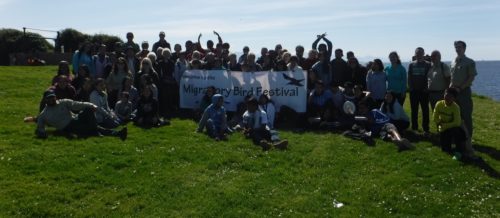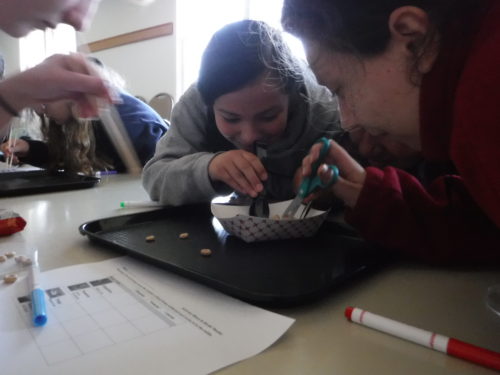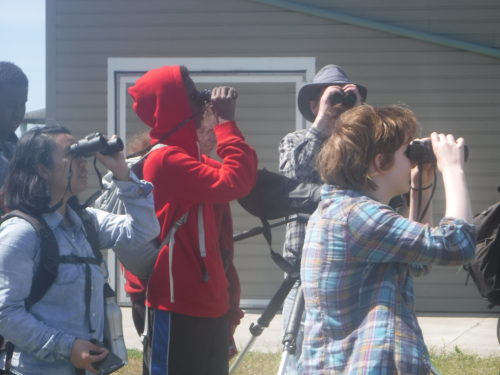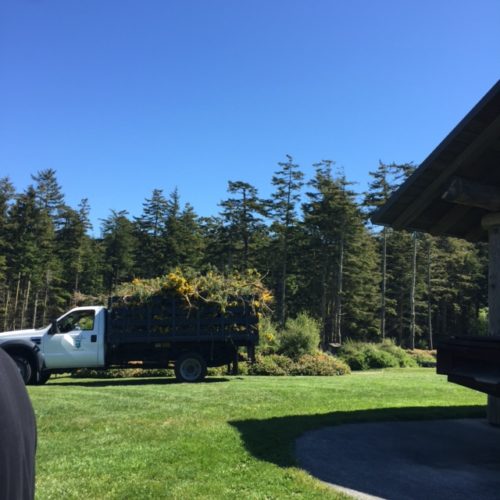Creating Tradition: Sixth Annual Migratory Bird Festival

Any cool event can happen once. Maybe twice. After so many years the “just a cool idea” starts to be folded into the fabric of a community. Hosted by the U.S. Forest Service at Ebey’s Landing National Historical Park with support from all the following partners, the Migratory Bird Festival is becoming one of the newest traditions in the Northwest Region.
Partners of the Migratory Bird Festival
• National Park Service
• International District Housing Alliance
• Mount Vernon Police Department
• Catholic Housing Services of Western Washington
• North Cascades Institute
Three groups of learners ranging in ages of 5 to 85 descended on Fort Casey at Ebey’s Landing National Reserve near Coupleville, WA for two days of learning, service and fun on April 30, 2016.
• The Kulshan Creek Neighborhood Youth Program is a year-round educational program that engages young people ages 5 to 18 from two Skagit Valley neighborhoods in a series of monthly field trips to explore the outdoors and learn about our local watersheds.
• Outdoor Opportunities is an outdoor expedition program designed to expose multi-ethnic teens (ages: 14-19) to environmental education, urban conservation and stewardship in the Seattle area.
• InterIm Wilderness Inner-City Leadership Development (WILD) is a youth leadership program that provides opportunities for wilderness and inner city environmental education and leadership skills development.
Joining the youth were parents of the Kulshan Creek students and elders of the InterIm WILD community.

Students using “beaks” to understand different bird adaptations.
The absolutely gorgeous day started out with the groups rotating between three stations, each designed to engage students in learning about local migratory birds. The first station was led by Joe Loviska and Hannah Newell, students in North Cascades Institute’s 15th graduate cohort studying in Outdoor Environmental Education, who discussed bird adaptations. To simulate various bird beaks, students were asked to pick up different types of food with chopsticks, tweezers, tongs and safety scissors. The engaging (and hilarious part) was the immersion Joe asked students to do. Putting their tool close to their moth, students simulated the frantic pecking motion that resembled a room full of chickens! After the laughter had died down, Joe recorded the data to see which beak was best for which type of food. Hannah then led us on a lesson on wing size by comparing the short, rapid flapping of humming birds to long, slow glides of eagles.
The second station, hosted by the Whidbey Island Audubon Society, led us through a bird watching lesson. With field guides and binoculars, we were able to notice the smallest details on each and every bird. In just a short amount of time, we were able to identify many different species of birds. Some groups even found 17 different species in 30 minutes!

Students watching birds from every angle!
The third station, a returning favorite at the festival, was a migratory bird game. To simulate how difficult it can be to migrate, instructors had students running through spinning jump ropes, escaping the clutches of cats and making due with disappearing wetlands. As one last round, the instructors took student suggestions on how to help make the journey easier and presented various ways to conserve birds like not putting wind mills in the main migratory path and keeping house cats inside.
For the past few years students have had the opportunity to help remove an invasive plant (scotch broom) from the historic reserve on the second day of the festival. Removing the plant allows for native plants to thrive, plants that the migratory birds depend on.
Some of the students who have been coming to the festival for years noticed how much of the weed was left, even after years and years of removal. After a long, hard day of work they were able to remove three full trucks of the invasive plant!

One of the three truckloads full of scotch broom! Photo courtesy of Kati Ortiz.
Thanks to all of our partners and graduate students for helping make our 6th Annual Migratory Bird Festival such a resounding success! I can’t wait to see how this tradition grows in the next six years.

